Bodywork spray tools

Blowguns and bodywork connectors
-
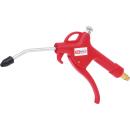 515.1901Pistol blowgunwith pressure adjustment
515.1901Pistol blowgunwith pressure adjustment -
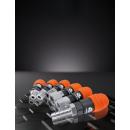 9390.000xCouplerair
9390.000xCouplerair -
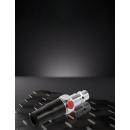 9510.0001Air blower1/4'' connection
9510.0001Air blower1/4'' connection -
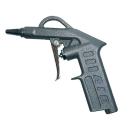 GP6113Blowgun1/4" short spout
GP6113Blowgun1/4" short spout -
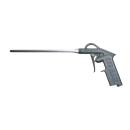 GP6114Blowgunlong bill
GP6114Blowgunlong bill -
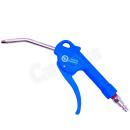 GPS9111Bellowsshort-billed
GPS9111Bellowsshort-billed -
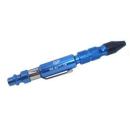 GPS9118SouflettesPen
GPS9118SouflettesPen
︾
Our Spray tools for your bodywork work :
Air fittings and air blowers are important components in the compressed air system used with bodywork paint spray guns. Here are some important technical features of these components:
Air fittings :
Material:
Air fittings are often made from metals such as steel or aluminium, but they can also be made from plastic. The material must be durable and corrosion resistant, ensuring long life and reliability.
Thread:
Air fittings generally have a standard thread, which must be compatible with the other components of the compressed air system. The most common threads are BSP (British Standard Pipe) or NPT (National Pipe Thread).
Type of fitting :
There are different types of fittings, such as quick couplings, bayonet fittings, or screw-in fittings. The choice depends on the type of Paint gun and air system used.
Working pressure :
The maximum working pressure of the fittings must comply with the specifications of the air system and the paint gun. It is usually measured in pounds per square inch (psi).
Inside diameter:
The inside diameter of the fitting must be large enough to allow adequate air flow, avoiding any restrictions that could affect the gun's performance.
Air blowers :
Material:
Air guns are also made from durable materials such as reinforced plastic or metal. Lightweight material is often preferred to ensure easy handling.
Shape and design:
Air blowers can come in a variety of shapes and designs to suit different applications. Some models are designed to reach hard-to-reach areas, while others may have adjustable nozzles to adjust the air pattern.
Trigger or switch:
Some models of air blowers are equipped with a trigger or switch to control the airflow. This allows for more precise and economical use, avoiding a constant flow of air when it's not needed.
Working pressure :
The recommended working pressure for air blowers should be compatible with the pressure of the compressed air system. It is usually specified in psi.
Air flow rate:
The air flow rate of the blowgun, measured in litres per minute (l/min) or cubic feet per minute (cfm), must match the requirements of the spray gun to ensure effective spraying.
Choosing the right air fittings and air guns for your paint spray gun and air system will ensure that your bodywork equipment works reliably and at optimum efficiency.
FAQ : Using body spray tools correctly :
1. What is the difference between a gravity spray gun and a suction spray gun for bodywork paint spraying?
The main difference lies in the paint feed mechanism. A gravity-feed gun has its cup positioned at the top, allowing natural gravity to feed the paint. A suction gun has its cup at the bottom, sucking up the paint thanks to a vacuum created by compressed air. The choice depends on the user's preferences and specific needs.
2. What size Nozzle is recommended for car paint?
Nozzle size depends on the viscosity of the paint. Thicker paints require larger nozzles. Consult the paint manufacturer's recommendations to determine the optimum nozzle size for uniform spraying.
3. How do I set the air pressure on the compressor for spraying paint?
Set the air pressure according to the gun and paint manufacturer's specifications. However, a generally recommended air pressure is between 2 and 3 bars. Precise adjustment ensures even spraying and avoids problems such as overspraying or underspraying.
4. What are the advantages of an air-assisted paint spray gun?
An air-assisted spray gun uses additional air to atomise the paint, offering finer control over the spray pattern. This can be advantageous for more delicate applications and reducing overspray.
5. Do I need to thin my paint before using it with a Spray gun?
Thinning paint depends on its viscosity and the manufacturer's recommendations. Paint that is too thick can clog the spray gun Nozzle. Carefully follow the paint manufacturer's instructions for correct dilution and use an appropriate Thinner.
6. How do I maintain my Spray gun to prolong its life?
Clean the gun immediately after use following the manufacturer's instructions. Dismantle the components and clean them thoroughly with a suitable solvent. Carry out regular maintenance in accordance with the manufacturer's recommendations to ensure optimum performance.
These answers are intended to provide basic advice on the use of body spray tools. For specific information, always consult the user manual for your equipment and the recommendations of paint manufacturers.